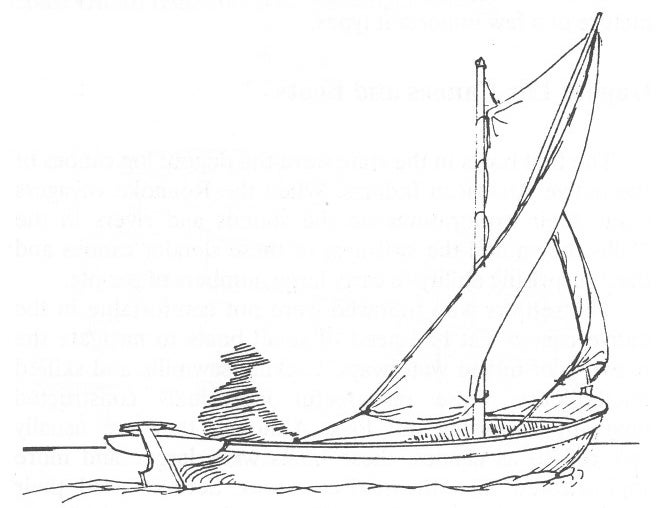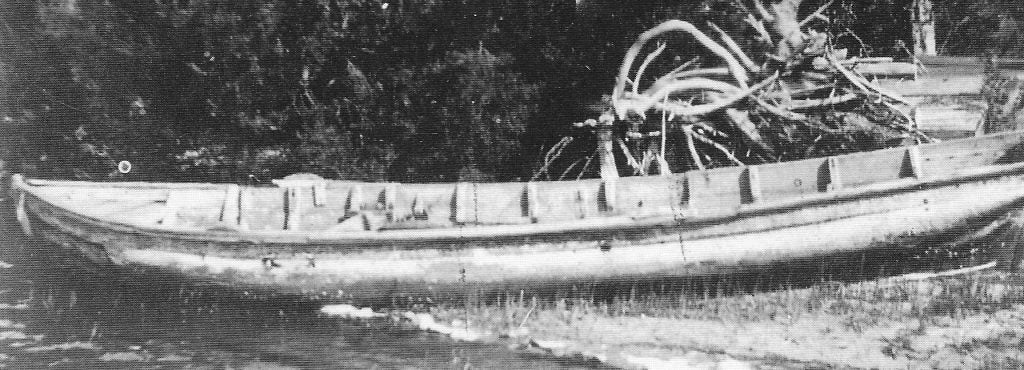
Split-Dugout Canoes (colloquially known as ‘Kunners,’ ‘Ke-Nuhs,’ and ‘Kooners’) are perhaps the first European-style vessels constructed in the Carolinas. Thought to be brought over by French Huguenots (a religious group) in the 1600s, they are documented to have been fairly popular until the 1800s. Although these vessels were originally powered by oars and polls, they sometimes were modified to add small sails (Alford 1992; Alford 2004:20-31).
Split-dugout canoes are form of canoe that had a larger capacity and more stability than a standard dugout canoe. To build a split-dugout canoe, a single log would be split down the middle. If multiple logs were used, some researches suggest that this would not be considered a split-dugout canoe. Once the log is halved, they would be carved out to get the shape of a boat. These two haves would then be joined together through various means to provide stability. By constructing the canoe in this manner, the builders would make the vessel wider and as a result more stable (Alford 1992:191-203).
Despite being one of the oldest types of boats found in the Carolinas, there appear to be two surviving examples of these craft. The most preserved split-dugout canoe is Doodle. Doodle is a 14 foot long cypress, split dugout canoe. This vessel was studied and determined to fit perfectly into descriptions of French canoes. The size of this vessel suggests that this vessel was probably designed for pleasure as it would have been too small to transport large quantities of good. Currently this vessel is held by the North Carolina Maritime Museum (Alford 1992:191-203).
The other surviving example of split dugout is the Bridgeton Hull. This vessel was discovered in 1950/1960s Bridgeton (Near New Bern), NC. After being discovered the vessel had several images taken of it, which has been the core of a study led by Alford. Unfortunately this vessel was lost. Based on the images, the vessel appears to have been 25 feet long and 6 feet in beam. This would mean that this vessel fits even more into the records of this vessel type since it would have been able to carry the 50 barrels that split-dugouts were capable of (Alford 1992:196-207)

By Caleb O’Brien
